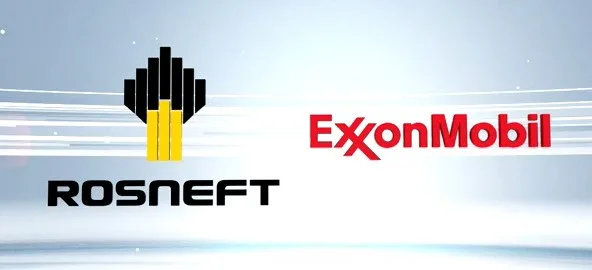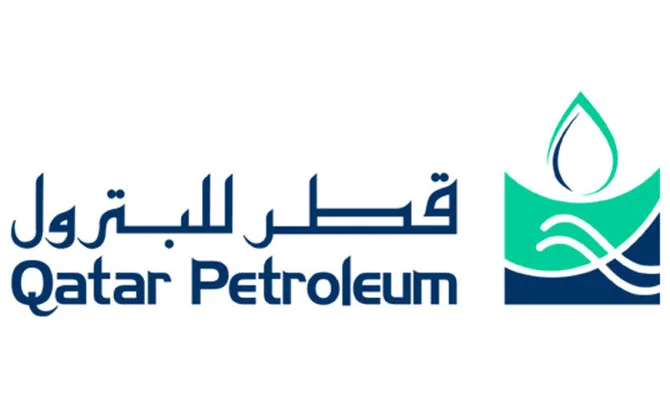Are you curious to know more about who Exxon Mobil’s joint venture partners are? As one of the largest publicly traded international energy companies, Exxon Mobil has formed several partnerships with other major players in the industry. And if you’re considering investing in this company or simply want to learn more about their operations, it’s important to understand these partnerships and how they contribute to Exxon Mobil’s success. So let me walk you through a comprehensive guide on who exactly are Exxon Mobil’s joint venture partners and what role do they play in the company’s operations. Get ready to dive into the world of energy giants and their collaborations!
So, who are Exxon Mobil’s joint venture partners?
Exxon Mobil’s joint venture partners vary depending on the specific project or location. However, some of their major partners include Rosneft (Russia), SABIC (Saudi Arabia), Qatar Petroleum (Qatar), and Petronas (Malaysia). These partnerships allow Exxon Mobil to access new markets and resources, share expertise and technology, and reduce financial risk. For example, their partnership with Rosneft allows them to tap into Russia’s vast oil reserves while also providing advanced drilling technology.
Additionally, Exxon Mobil has formed joint ventures with other major companies such as Chevron, Shell, Total SA, and BP for various projects around the world. These collaborations not only benefit both parties involved but also contribute to global energy security by diversifying supply sources.
Furthermore, Exxon Mobil has also partnered with smaller companies in emerging markets like Papua New Guinea where they have a joint venture with Oil Search Limited for natural gas exploration and production.
Overall, these joint ventures play a crucial role in Exxon Mobil’s business strategy by allowing them to expand their operations globally and stay competitive in the ever-evolving energy industry.
Understanding Exxon Mobil’s Joint Ventures and Partnerships
Exploring the world of oil and gas, it’s impossible to miss out on a giant like Exxon Mobil. The multinational corporation has gained global dominance by expanding its operations beyond boundaries. But what makes Exxon Mobil stand out? It is their strategic approach towards joint ventures and partnerships. These alliances are not just limited to increasing market penetration or enhancing profitability, but they also play an integral role in sharing risks, accessing new technologies, and tapping into local expertise.
Joint Ventures: When we talk about Exxon’s joint ventures and partnerships, some notable ones come forward that have made substantial contributions to its success.
- Sakhalin-1: This project is one of the most significant consortiums in Russia’s history. Operating along with Rosneft (Russia’s state-owned oil company), Exxon owns 30% stake offering a massive potential for oil production.
- XTO Energy: A key player in the US shale industry was acquired by Exxon in a move aimed at capitalizing on growing natural gas exploration opportunities.
Partnerships:In addition to joint ventures, Exxon Mobil has entered into multiple strategic relationships over the years.
- Royal Dutch Shell: A partnership with this European energy giant led to the creation of various entities across different markets globally.
- PetroChina: The collaboration allowed both companies to explore unconventional resources within China while bolstering mutual growth prospects.
So, you see? All these collaborations helped shape Exxon Mobil’s reach globally while leveraging shared strengths. This strategy did more than just amplify profits – it contributed significantly towards shaping today’s energy landscape while mapping future pathways for sustainable development.
The Impact of Joint Venture Partners on Exxon Mobil’s Operations
Joint Venture Partners have been significantly beneficial and transformative to Exxon Mobil’s Operations over the years. These strategic partnerships have played a vital role in enhancing the company’s productive capacity while at the same time adding value to their overall business operations. No doubt, they’ve become an integral part of Exxon Mobil’s success story.
For example, projects like Sakhalin-1, a joint venture that brings together ExxonMobil, Japanese consortium SODECO, Russian companies Rosneft and ONGC Videsh Ltd., is one such example where collaborative efforts have proved highly effective in tapping into new markets and resources.
On this project:
- ExxonMobil brought its technical expertise and experience to bear,
- SODECO offered financial strength,
- Russian companies provided access to local resources
Similarly, ExxonMobil’s partnership with Qatar Petroleum resulted in bringing liquefied natural gas (LNG) projects online more quickly than would have been achievable otherwise.
In both these ventures, it isn’t just about what each party can gain individually but how collaboratively they can achieve much more significant results that benefit all stakeholders involved.
These alliances not only enable ExxonMobil to broaden its operational capabilities but also provide opportunities for technological advancements through shared knowledge exchange – ultimately contributing towards profitability and sustainability.
Joint venture partners’ influence on Exxon Mobil’s operations revolves around fostering mutual growth by leveraging respective strengths – thereby creating win-win solutions for everyone involved. Further reinforcing their commitment towards achieving excellence in energy production while respecting environmental norms.
Read also: how to get venture capital funding
Exxon Mobil’s Joint Venture with Rosneft: A Case Study

Exxon Mobil’s joint venture with Rosneft is a fascinating tale of international business strategy. In 2011, these two industry giants formed an alliance to explore and extract crude oil in Russia’s Arctic offshore region, one of the largest unexplored reservoirs of hydrocarbons on Earth. Picture this: massive drilling platforms fighting against the harsh conditions, pulling up precious oil from beneath the frozen depths – it’s like something out of a movie! This partnership reflects both Exxon Mobil’s boldness in pursuing remote territories and Rosneft’s desire to gain technical expertise from more experienced players.
However, it hasn’t been all smooth sailing for this collaboration. The partnership has faced significant challenges. International sanctions set by Western countries against Russia brought operations to a halt because they restricted technology transfer needed for extraction activities. But despite setbacks, both companies remained committed to their goals. Imagine executives strategizing around boardroom tables; they’re learning valuable lessons about dealing with geopolitical changes.
- Resilience: The ability to weather difficult conditions and bounce back stronger.
- Diplomacy: Navigating international relations tactfully for business benefits.
- Innovation: Finding alternative solutions when established methods are barred due to external factors.
Remember that every challenge presents an opportunity for growth – a mantra likely echoed within the walls of Exxon Mobil and Rosneft as they charted their journey together through turbulent waters into potentially lucrative opportunities.
Exploring the Relationship between Exxon Mobil and Qatar Petroleum

Exxon Mobil and Qatar Petroleum: A relationship that goes beyond the usual business partnership. This alliance has created a powerful synergy in the global petroleum industry, shaping trends and molding market dynamics. Both enterprises have an impressive portfolio of successful undertakings together that have undoubtedly contributed to their respective gains and solidified their clout within the energy sector.
- Anchoring on Mutual Advantages
The strategic tie-up between Exxon Mobil, one of America’s largest oil companies, and Qatar Petroleum, a state-owned corporation from one of the world’s richest countries, is hinged on mutual benefits. Exxon brings to the table its cutting-edge technology, robust infrastructure, deep pockets for R&D investments; add to this list its extensive network in marketing and distribution channels across continents. On the other hand, Qatar sits upon massive reserves of natural gas – a treasure trove waiting to be tapped with efficiency by experts like Exxon.
- Nurturing Global Impact
This collaboration reaches out far wider than just contributing colossal amounts towards each entity’s bottom line – it impacts economies worldwide. The joint projects they’ve initiated are nothing short of remarkable: turning Qatar into one of major LNG (Liquefied Natural Gas) exporters globally; pioneering production facilities that are hailed as engineering marvels such as Ras Laffan Industrial City; or reshaping energy markets through ventures like Golden Pass LNG terminal project in Texas which aims at transforming US from being an importer to exporter status — these gateways testify how ExxonMobil-Qatar Petroleum collaboration continues carving indelible footprints right across international borders.
You may also like: Who are Tesla’s largest partners?
ExxonMobil Chemical and SABIC: A Collaboration in the Petrochemical Industry

ExxonMobil Chemical and SABIC, two heavyweight names in the petrochemical industry, have teamed up to create a synergy that is set to boost the sector’s growth. This collaboration promises to not only enhance innovation but also deliver benefits on a global scale. ExxonMobil, with its vast experience and resources, combined with SABIC’s deep regional understanding and proven performance has created an alliance that is expected to positively influence both their operations and the overall industry.
This collaboration focuses on key areas such as technology development, project execution, marketing strategies and so much more. The union of these two giants brings forth incredible opportunities for learning advancement in areas including:
- Innovations in plastics production,
- Leveraging shared technologies,
- Joint research initiatives,
- Improved supply chain management.
The ultimate goal here is improving efficiency while reducing environmental footprints by adopting cleaner methodologies. In essence, this partnership between ExxonMobil Chemicals and SABIC demonstrates how collaborations can help industries grow sustainably while promoting technological advancement within their domain.
The Role of Joint Ventures in Strengthening ExxonMobil’s Market Position
ExxonMobil, a goliath in the global energy sector, has expertly used joint ventures to cement its market position. These strategic partnerships are no mere happenstance; they represent a purposeful and calculated approach to business expansion. By collaborating with other companies, ExxonMobil effectively pools resources, shares risks and harmonizes strengths towards achieving mutual goals. Joint ventures have been employed as an ingenious strategy by this corporation not only to penetrate new markets but also to innovatively bolster existing ones.
Take for instance ExxonMobil’s various partnerships with major players both within and beyond the oil industry.
They’ve joined forces with companies like Rosneft in Russia or SABIC in Saudi Arabia among others. Each venture provides them with access to untapped markets along with a wealth of local knowledge that is invaluable when navigating unfamiliar terrains.
- Their partnership with Rosneft allowed them access into Russia’s vast Arctic reserves,
- SABIC lent them insight into the Middle-Eastern petrochemical market.
Fascinatingly enough, these alliances extend even further; beyond just business counterparts – reaching out to environmental organizations too! Collaborations such as those with Conservation International exemplify ExxonMobil’s commitment towards environmental sustainability alongside their pursuit for corporate growth.
So, you see? The role of joint ventures in strengthening ExxonMobil’s market position cannot be overstated – it is indeed integral!

